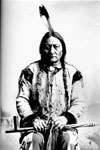Contact Information
Office:
Office of Robert N. Clinton
3217 E Fremont Rd
Phoenix AZ 85042-6127
Communications:
480.389.6814 (Google Voice)
Email to rclinton@robert-clinton.com
Photography: cybershutterbug.com
Flickr: @keycmndr
Tumblr: @keycmndr
Bluesky:@cybershutterbug.bsky.social
Bluesky:@robertclinton.bsky.social
Diaspora: @cybershutterbug@disap.org
Recent Posts
- Clinton Publishes Second Collection of New York City Photographs
- Clinton Publishes First Collection of Photos From New York City
- Clinton’s Scholarship Cited By United States Supreme Court
- Clinton Publishes Second Book of Salt Lake City Images
- Clinton Publishes Second Collection of Salt Lake City Images
- Clinton Publishes First Book of Salt Lake City Images
- Chief Justice Clinton Speaks at ABA Business Law Section Virtual Spring Meeting
- Clinton Publishes a Second Photobook of His Santa Fe Images
- Clinton Publishes Photobook of His Images of Santa Fe
- Clinton Publishes Photobook of London Images
Constitutional Law
Indian News
